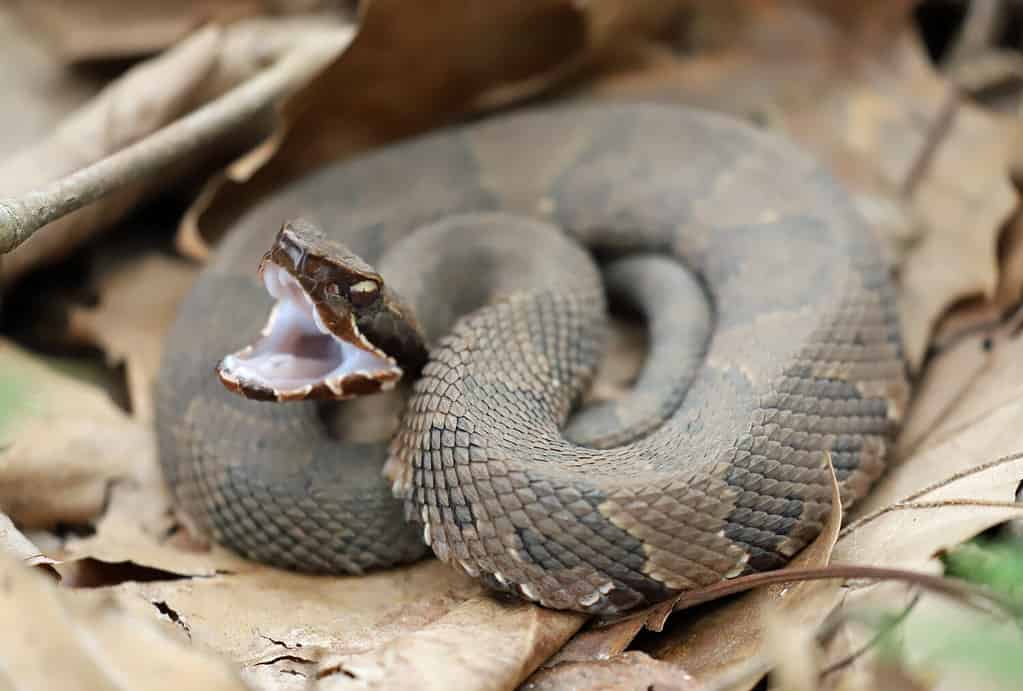Breaking news: A python in an Oklahoma mobile home park is finally being captured after five months on the loose.
At a mobile home park, you would probably assume to see lots of stray animals around. From dogs to cats to even possums. However, a massive python is probably not on your list of animals to see at a mobile home park. The residents of this park were astonished to find that this python had been living there for five months!
Python Captured in Mobile Home Park

Albino-reticulated pythons can live longer than 25 years.
©My_Gook/Shutterstock.com
A mobile home park in South Oklahoma City was being terrorized for five months by a massive python. This wasn’t just any old snake, either. This was a 13-foot-long albino reticulated python. The staff at the mobile home park began to notice it was an issue, and so they hired Trevor Bounds of Red Beard Wildlife Control to capture this python.
“We’re talking, that thing has been eating opossums, foot-long rats, and cats,” said Trevor Bounds of Red Beard Wildlife Control. “The mouth on that thing is the size of your foot and when it opens up you’re going to be able to fit something pretty large in there.”
He and his team set up thermal cameras with a 24-hour live feed. Once they found him living underneath a home, they were able to create a trap to get it out. Once they got a good look at this python, Bounds said that, most likely, it was a pet at one point and got loose.
“…I can imagine that each one of those cats put up a nasty fight. So, when it’s been attacked that many times and to that extent, the nice, non-aggressive pet snake we once knew is no more. This thing is dangerous now,” Bounds remarked.
If you find yourself in need of a snake removal or getting questions answered, you can contact the Oklahoma City Animal Shelter at 405-297-3100.
How Many Snakes Live in Oklahoma?

Cottonmouth snakes live up to 10 years.
©KF2017/Shutterstock.com
Oddly enough, Oklahoma is listed among the top ten states in the United States with the most snakes. “Oklahoma is home to 46 species of snakes, 7 of which are venomous.” According to Texas A&M University, “Venomous species include the copperhead, cottonmouth, western diamondback rattlesnake, timber rattlesnake, prairie rattlesnake, western massasauga, and western pigmy rattlesnake.”
Is the Reticulated Python Venomous?
The reticulated python (Malayopython reticulatus) of the genus Malayopython is generally located in Asia. (Hence, why the above snake removal specialist remarked that this python was most likely a pet that got loose.)
No, the reticulated python is not venomous; however, they are highly aggressive. It is said that they can even get big enough to kill their owner. So, having one of these for a pet is dangerous, to say the least.
The photo featured at the top of this post is © PaniYani/Shutterstock.com
Discover the "Monster" Snake 5X Bigger than an Anaconda
Every day A-Z Animals sends out some of the most incredible facts in the world from our free newsletter. Want to discover the 10 most beautiful snakes in the world, a "snake island" where you're never more than 3 feet from danger, or a "monster" snake 5X larger than an anaconda? Then sign up right now and you'll start receiving our daily newsletter absolutely free.
Thank you for reading! Have some feedback for us? Contact the AZ Animals editorial team.






